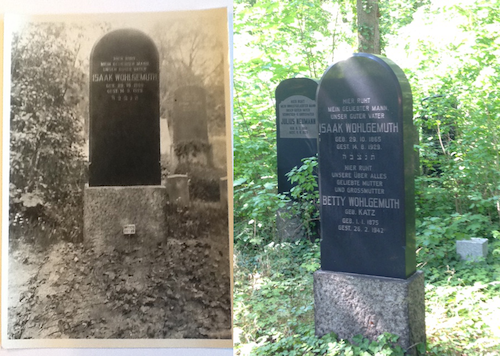Betty’s fate
Betty Wohlgemuth lived three and a half years longer after saying goodbye to her daughter and granddaughter in Berlin. In October 1941, the cycle of persecution neared its conclusion as the deportations of Jews from Berlin began. Through January 1942, ten transports of roughly 1000 people each were sent to camps in the East. As a elderly widow, Betty was not listed to be taken on the early transports but the outcome must have seemed inevitable.
We didn’t know for sure what happened to Betty until fairly recently when Joanne uncovered the Wohlgemuth grave plot hidden in the brush at Weißensee Cemetery. Despite the ongoing deportation of Jews from Berlin at the time, this important Jewish institution in the borough of Pankow surprisingly remained in business throughout 1941 and 1942 and to a lesser extent after that. It is said that the Nazis let Weißensee operate in those years as a public relations stunt, something like their supposedly model concentration camp at Theresienstadt.
Weißensee also served an definite need, as more than 1000 burials were made there in 1942. The surviving cemetery records show suicide as the cause of death on a surprisingly high percentage of those deaths.
From the Wohlgemuth gravestone that Joanne recently visited, we now know that Betty was laid to rest next to her husband Isaac at Weißensee on February 26, 1942. We have not yet discovered the original cemetery record for the burial, so we don’t know if she died of natural causes or possibly—sad to contemplate—took her own life in the face of an expected deportation.

